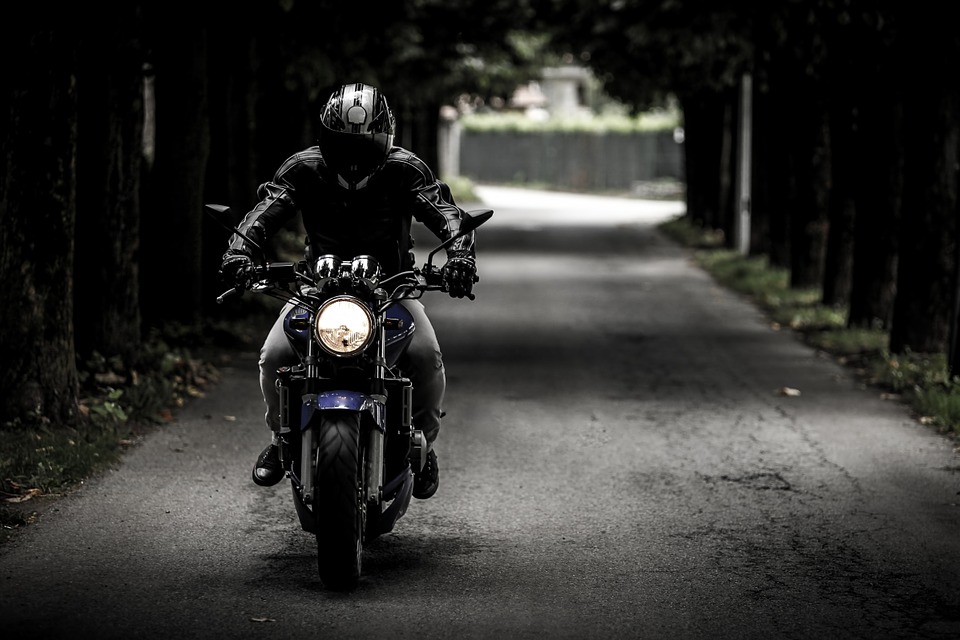Motorcycles and Safety Tips
One way to tell that spring is in the air is by the number of motorcyclists you are seeing. For the great majority of them, the warm weather and price of gas creates an urgency to dust off those old motorcycles that has been sitting in the garage for the past five months. The first couple of months of riding are the most dangerous as riders acclimate to the motorcycles and try to regain old skills that have deteriorated over the long winter break. Unfortunately, casual riders too often apply car driving techniques to motorcycling. This is akin to believing that just because you know English you can also communicate in Japanese. The steering action of motorcycles has absolutely no relationship to the steering action of a car. This is one of the things that get people into trouble. Taking evasive action on a motorcycle actually requires, uh, practice. Taking a skills course, or reading a book and practicing in an empty parking lot will contribute to survivability and riding enjoyment.
Things we take for granted as car drivers like tar strips, railroad tracks, loose gravel, and painted lines are hazardous to a motorcyclist. Knowing that the road is extremely slippery after it first starts to rain is something a motorcyclist needs to keep in his toolbox, but is of not much consequence to car drivers. The road has the same traction coefficient for both, but car drivers are less likely to test the limits just by virtue of the fact that they don’t need to balance the car, or balance the braking.The casual motorcyclist takes for granted that car drivers will see him or her and doesn’t account for a phenomenon called inattention blindness, whereby they become invisible to the operator of the car. Many crashes, often fatal, occur when a car turns into the path of a motorcyclist. Whether the motorcyclist is distracted and suffering from inattention blindness himself, or whether he applies the habits he learned as a car driver to the motorcycle, the results are the same, injury or death to the motorcyclist and seldom any injury to the car driver.
Motorcycling requires a different mindset than that of driving a car. Distractions, while unacceptable to either endeavor, are especially hazardous to the motorcyclist. A bad day at work or an argument with a co worker or spouse sets the stage for a dangerous drive home because the operator of the car or bike is not living in the present moment. Ever drive home and wonder how you got there? It happens to all of us, but the motorcyclist must change gears before jumping on the bike or the end game could be fatal. Motorcycling is as much or more mental than physical. When jumping on a bike, forget the fact that there are laws governing the right of way on the street. If a car driver runs a traffic light, I am still dead if I don’t have the predictive skills to handle that situation. If a car driver loses me in his side view mirror, I am still coming out on the short end of the stick if he moves into my lane. Doing many of the quality checks in my business, which involves road testing the car after repair, I am shocked at the number of drivers who operate their vehicles with incorrectly adjusted side view mirrors.
This habit increases the dead zone, the area not covered by the mirrors, to the point where the driver has no hope of “seeing” the motorcyclist or many smaller cars for that matter. A mirror could be adjusted any old way and still be able to view a tractor trailer. I have never figured out why mirror adjustment is not taught in driver ed classes. Being able to predict before passing that a car driver is going to move into his space or make a left turn in front of him can save the motorcyclist a lot of pain and suffering. Predictive skills are critical to survival and can be taught, but often times come from the experience of surviving a hazardous situation. It is better and safer to learn how a skilled motorcyclist has handled situations, which is why constant training is so important.Remember that each of us is responsible for the safety of ourselves and others when operating motor vehicles, be they motorcycles, trucks, or cars. Whether you are operating on 2 or 4 wheels eliminate distractions and consider taking a skills course to improve safety for you and your family. For motorcyclists check out the Motorcycle Safety Foundation courses, free to Pennsylvanians, while car drivers can find training at companies such as Bertil Roos, which has on road training courses available. It is the best money you will ever spend. Improving control skills is one of the most important steps one can take for safe and enjoyable driving.

